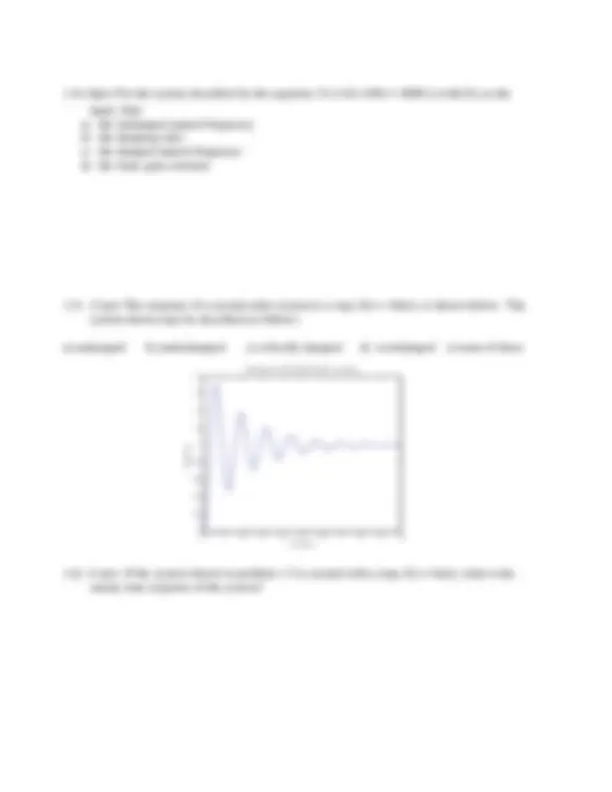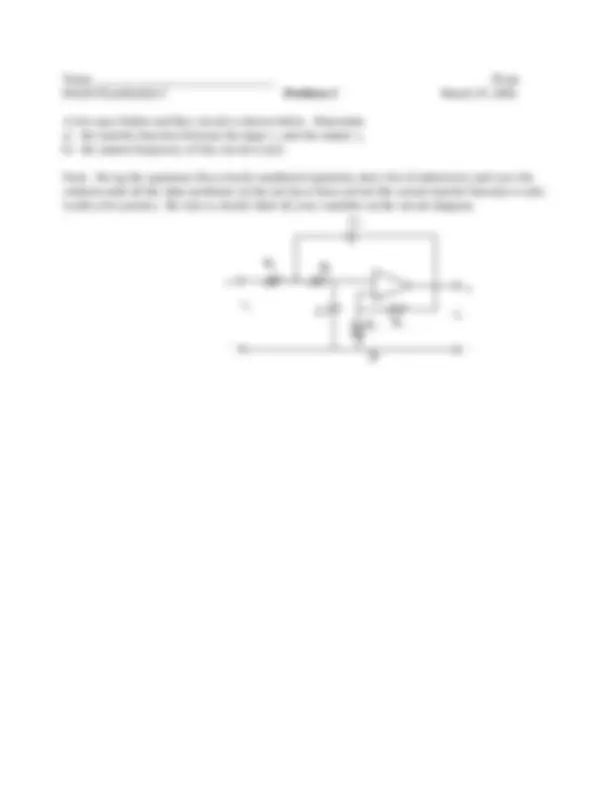





Study with the several resources on Docsity

Earn points by helping other students or get them with a premium plan


Prepare for your exams
Study with the several resources on Docsity

Earn points to download
Earn points by helping other students or get them with a premium plan
Community
Ask the community for help and clear up your study doubts
Discover the best universities in your country according to Docsity users
Free resources
Download our free guides on studying techniques, anxiety management strategies, and thesis advice from Docsity tutors
Material Type: Exam; Professor: Cornwell; Class: Analysis & Design of Engr Syst; Subject: Engineering Science; University: Rose-Hulman Institute of Technology; Term: Spring 2002;
Typology: Exams
1 / 6

This page cannot be seen from the preview
Don't miss anything!




Name 30 pts ES205 Examination I Problem 1 March 25, 2002
You must show all work for full credit on these problems.
1.1) (5 pts) Given the transfer function for a bridged-T network:
2 2 1 1 2 in
0 1 2 R R Cs RR Cs
1 2 RCs RR Cs V s
V s
= find the corresponding differential equation of motion for
this system (5 pts)
1.2) (5 pts) Given the simulation diagram below, find: a) the system's time constant b) the system's static gain constant c) the differential equation relating y(t) to x(t)
1.3) (5 pts) Given the 2nd order differential equation of motion: &y&^ +^4 y&+^4 y=u, determine an appropriate state-space description.
1.7) (5 pts) Given the transfer function
Rs
Y s = (^2) + + and the corresponding differential
equation of motion: y&&^ +^8 y&+^15 y=^20 r, draw the corresponding simulation diagram using only gains, integrators, and sum blocks.
Name 30 pts ES205 Examination I Problem 2 March 25, 2002
A low-pass Sallen and Key circuit is shown below. Determine a) the transfer function between the input vs and the output vo b) the natural frequency of this circuit (2 pts)
Note: Set up the equations first (clearly numbered equations and a list of unknowns) and save the solution until all the other problems on the test have been solved (the actual transfer function is only worth a few points). Be sure to clearly label all your variables on the circuit diagram.
vs C 2 vo R 2